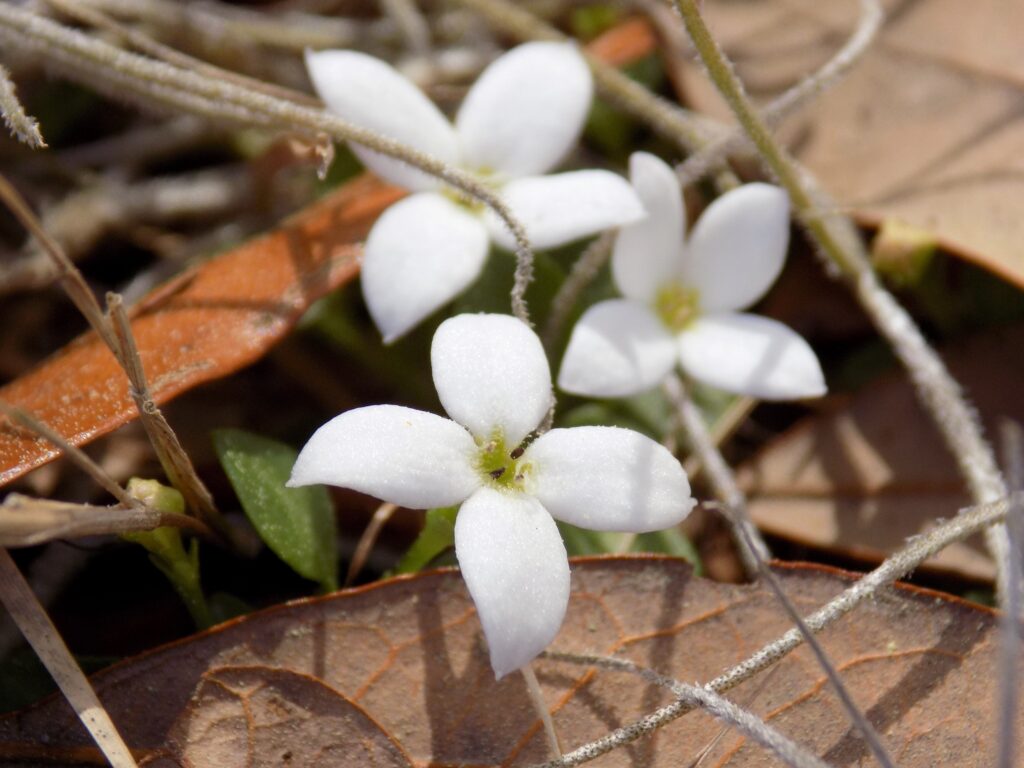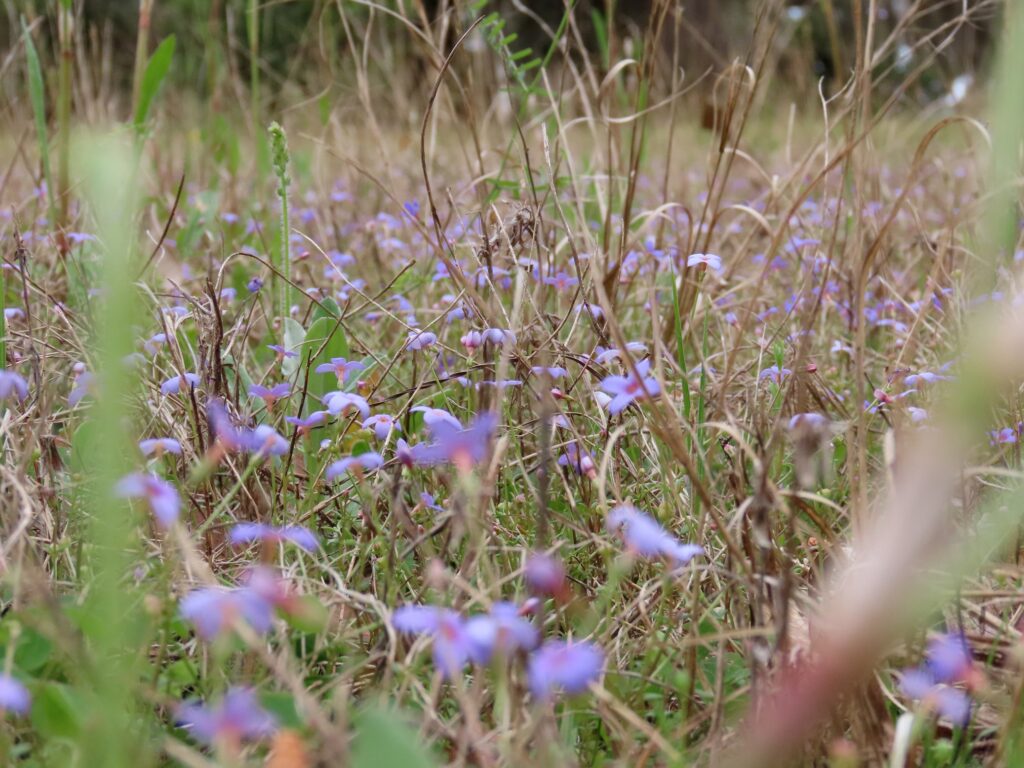



This week for Flora and Fauna Friday, we’re zooming in on a genus of tiny wildflowers native to Edisto. This week we’re talking about Bluets, genus Houstonia. On Edisto I’ve seen two species of Bluet: the Tiny Bluet (Houstonia pusilla) and the Roundleaf Bluet (Houstonia procumbens). Both species are tiny, 4-petaled wildflowers that bloom in late winter and do well in open areas. Usually in rather poor soil. The Azure Bluet (Houstonia caerulea) can also be found in the area but I’ve yet to come across it on the Island.
The aptly named Tiny Bluet is only a few inches tall. It’s singular, yellow & mauve-eyed pale-purple flowers only measure about a quarter-inch wide. It’s thin, solo stems and dainty opposite and simple leaves pepper lawns, roadsides, and ditch edges with pinpricks of floral flare. Places with high disturbance, micro patches of bare-earth, and plenty of sun are their preferred locale. Their small stature lets them eke out a living in micro-habitats. These are tiny areas of habitat in a larger landscape that can are suitable for a given plant species. These micro-habitats can be a several yards across or only large enough to support a single plant. Whether they’re different in light intensity, soil moisture, available nutrients, or soil composition, micro-habitats are a patch of earth just different enough from all the other dirt around it to support a certain species.
The slightly larger Roundleaf Bluet is also only a few inches tall but a bit more robust. Their bone white petals encircle a lime green center to form a flower that’s about a half-inch wide. Their leaves are larger and wider, almost heart shaped. Unlike the Tiny Bluet, the Roundleaf Bluet will spread over the ground and tends to form mats a few inches across. Their wide leaves and spreading stems help them survive in the dry sandy habitats they prefer. Their large leaves and overlapping, spreading stems shade a significant area of the soil above its roots and help hold water in the soil where it would otherwise evaporate. These areas are naturally barren due to poor, dry soils but Roundleaf Bluet is adapted to exploit these barren sunny areas.
Like many of our spring wildflowers, Bluets are everywhere but often overlooked due to their size. However, in the right habitat, even a miniature wildflower like this can be a stunning sight. In certain sparse lawns and hayfields, the Tiny Bluet can create a purple haze above the ground. A thin film of violet hovering only a few inches above the grass, as millions of Bluet blooms rub shoulders with one another. Canada Toadflax is another that creates such a view. The sight truly a privileged experience to behold.